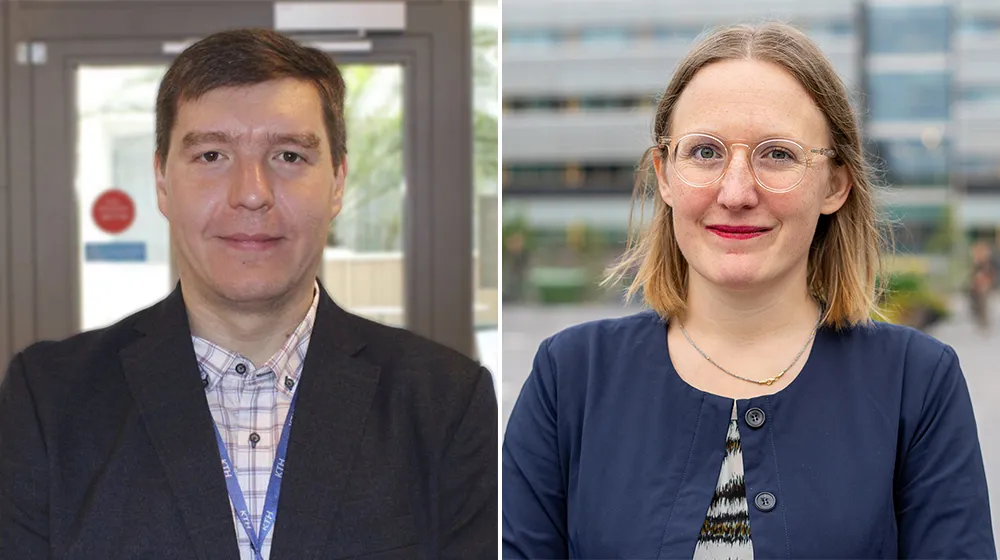Two KTH researchers appointed Research Leaders of the Future

The Foundation for Strategic Research has appointed the Research Leaders of the Future and among the 16 elected researchers are two from KTH: Vitaly Petrov and Seraina Dual.
“I am truly honored to receive this grant and excited about the research opportunities that this opens for the people in my research group. Now, I can say yes to impactful ideas emerging from my group,” Dual says.
The Foundation for Strategic Research received a total of 213 applications to the Future Research Leaders 9 (FFL-9) programme, of which 16 were selected. The researchers will receive a grant of 15 million Swedish crowns each over a five-year period and will participate in a comprehensive leadership training program.
Vitaly Petrov is grateful for the support and feels truly excited about pursuing his long-term research project, efficient mobile near-field terahertz communications for 7G.
7G terahertz wireless networks beyond 2030
Petrov’s research team will aim to engineer wireless communication systems that feature 10-100 times higher data rates than modern 5G networks support. “For this, we aim to explore the unique properties of wireless signals in the terahertz frequency band allowing us to engineer the way they spread over the air; their shape, trajectory, and other properties,” Petrov says.
According to Petrov, these solutions will enable novel usage scenarios in people’s everyday lives that can hardly be supported in modern wireless networks today. These include replacing smartphones with data-rate-hungry augmented and virtual reality glasses, collective autonomous driving by smart cars and even next-generation ultra-high-rate satellite networks. Future everyday uses aside, Petrov finds the topic extremely interesting to explore from a scientific point of view.
“Mobile terahertz communication systems feature unique properties that have never been studied, or even imagined, for wireless connectivity before, such as the possibility to change the trajectory of the wireless signal midway as it spreads, among others,” Petrov says. “This combination of factors opens the door to various innovative solutions to be developed by the team in the next five years.”
Soft robots helping the heart
Seraina Dual’s research projects involve developing techniques for integrating soft robots around blood vessels for monitoring and improving function in cardiovascular diseases.
“A soft robot is the artificial analogous to a biological muscle, because it is soft and can contract. As a sensor, these soft robots allow doctors to monitor patient health and optimise treatments. As active muscles, the soft robot act as a secondary heart and reduce the strain on the heart,” Dual says.
She became interested in soft robots as an alternative to device-based therapies, which typically come into contact with blood increasing the risk of stroke in the patient. However, there are several critical challenges that need to be addressed before soft robots can be transferred to clinical practice.
“The way we deploy soft robots avoids the contact with blood. The contact with the blood vessel, however, is not understood well enough to allow for safe patient implant. This project will lay the biomechanical foundation to achieve integration of intelligent soft robots with the human cardiovascular system for long-term support of patients with cardiovascular disease,” Dual says.
Text: Jon Lindhe ( jlindhe@kth.se )
